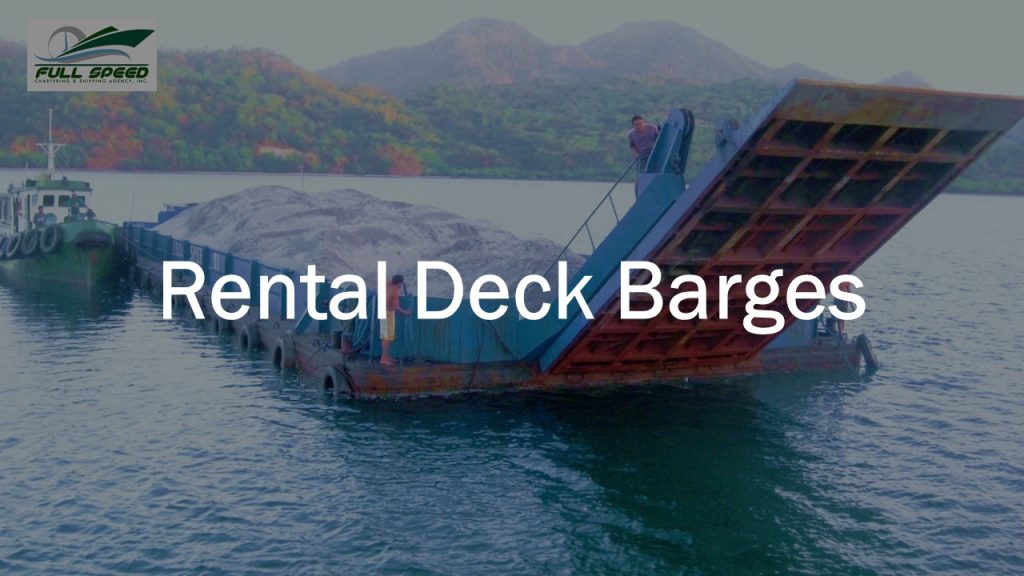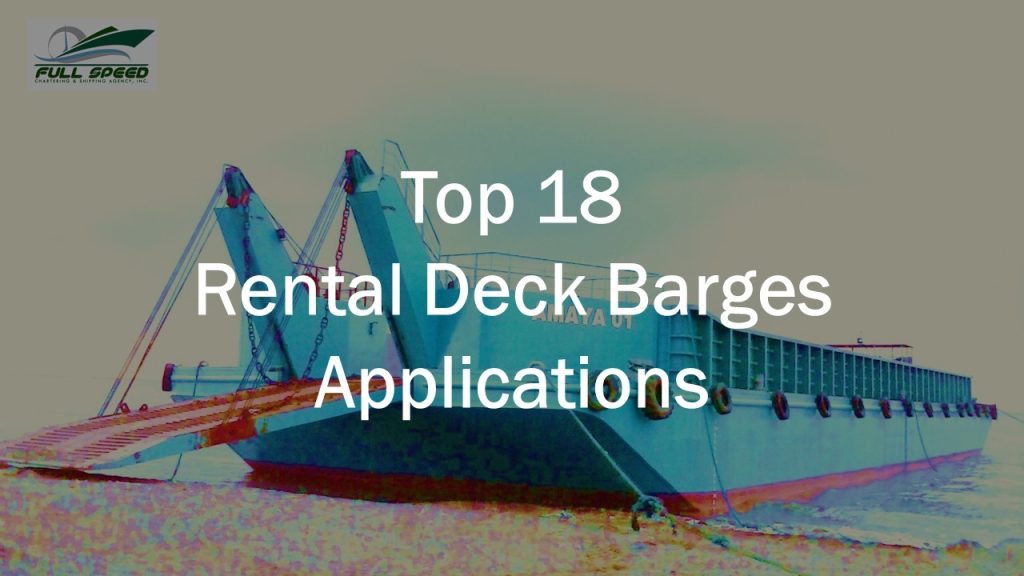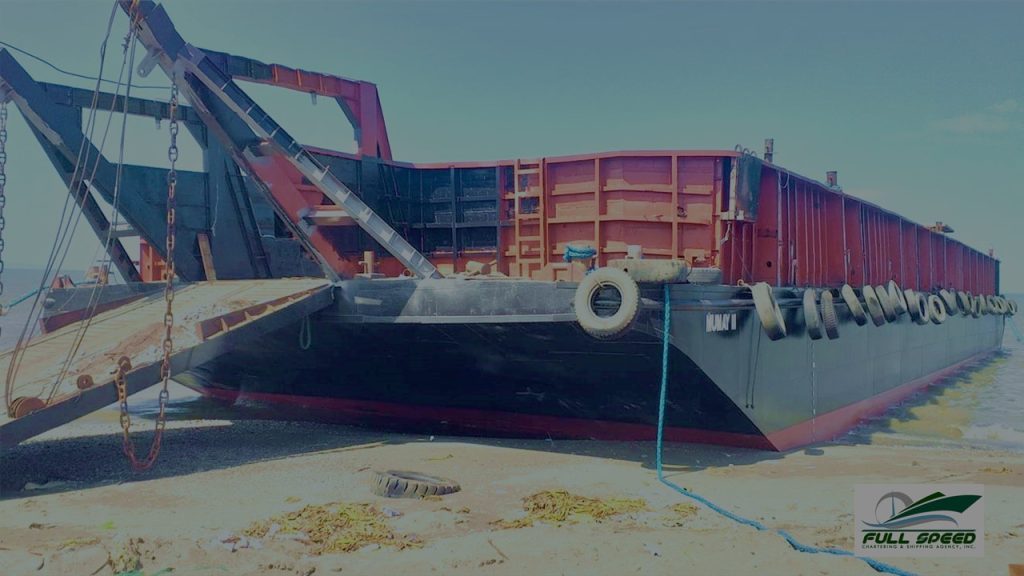Amidst the tropical beauty of the 7,000+ islands that make up the Philippines, there floats an industrial giant, the Hopper Barge. These robust watercraft often go unnoticed despite being indispensable cogs in the vast machinery of cargo shipping in this archipelago nation. It’s time to shed light on these mammoth workhorses, pivotal for their contribution towards maintaining a seamless supply chain flow throughout intricate Philippine waterways. Buckle up as we embark on an intriguing journey exploring 6 remarkable uses of the Hopper Barge in the Philippines for cargo shipping, construction, mining, and offshore engineering.
Click here to view our tug and barge in the Philippines.
Click here to view our tugboats in the Philippines.
Click here to view our barges in the Philippines.
Understanding the Role of a Hopper Barge in the Philippines
To truly appreciate the role of a hopper barge in the Philippines, you have to understand its unique design and purposeful versatility. Operating like an enormous floating dump truck, these specialized barges sail along waterways carrying colossal heaps of raw materials such as sand, gravel, or even dredged soil. Its holistic involvement in mining endeavors, tropical construction projects, and offshore energy sectors has shaped this humble conveyance into the backbone of significant industries.
From the choppy waters off Palawan, where it serves the oil and gas industry, to Cebu’s burgeoning cityscape aiding infrastructural development, the hopper barge quietly but indispensably supports economic progress. Beyond just hauling materials, they also play pivotal roles in specific tasks such as land reclamation and offshore wind farm developments. In every sense of the word, the Philippines’ hopper barges are unsung heroes leaping forth amidst waves, securing the nation’s prosperity while being hidden from the limelight.
Do You Want to Rent a Hopper Barge in the Philippines?
When diving into the multifaceted realm of marine services in the Philippines, Full Speed Chartering and Shipping Agency Inc. (FSCSAI) emerges as an undeniable standout. Offering top-notch hopper barge rentals, FSCSAI works to combine high-quality services with affordability.
- Email us: info@fullspeedchartering.com
- Mobile, Viber, WhatsApp: +63 939 3753224
- Facebook Messenger: Click here
- Click here to inquire
Why settle for subpar quality? With a commitment like no other company, FSCSAI ensures brilliant delivery of cargo shipping, construction support, mining assistance, and offshore energy solutions. Value for money is guaranteed with FSCSAI’s seamless blend of world-class commitment to service delivery and competitive pricing.
Another unique offering of FSCSAI is their customizable rental packages, tailored to suit a variety of project needs. Understanding that each customer’s requirements differ, they place great emphasis on providing solutions specially designed to meet individual business goals. This approach enables FSCSAI to deliver more than just services; it allows them to create and foster enduring partnerships with clients.
In terms of the environment, FSCSAI stands by its responsibility to promote sustainable practices in operations involving marine transportation facilities and equipment. Environmental sustainability is deeply embedded in everything that FSCSAI does—this comprises initiatives such as fuel-efficient travel routes, eco-conscious cargo handling protocols, waste management schemes, and continuous professional development programs focusing on environmental awareness among crew members.
The qualified team of maritime experts at Full Speed Chartering and Shipping Agency Inc. brings a depth of experience matched with an uncompromised focus on safety compliance, ensuring procedures are carried out according to international maritime laws for maximum security during shipping operations.

What Exactly is a Hopper Barge?
A hopper barge is a unique workhorse of the maritime world. At first glance, it may seem like just another boat, but beneath its rugged exterior lies an ingenious design tailored specifically to handle heavy loads. A marvel of engineering simplicity with a flat-bottomed hull and expansive receptacles (or “hoppers”), these barges are capable of transporting colossal quantities of materials such as rocks, sand, gravel, or coal through rivers and seas.
What sets a hopper barge apart from other vessels is its distinguished loading and unloading system. Unlike conventional barges, where cargo is externally hoisted on board, materials in hoppers are efficiently loaded directly through the top and off-loaded underneath via gravity, aided by hydraulic flaps for precise control. The seamless process not only promotes safety but also ensures minimal environmental impact—truly an embodiment of strength paired with sophistication that’s quietly revolutionizing industries from cargo shipping to construction!
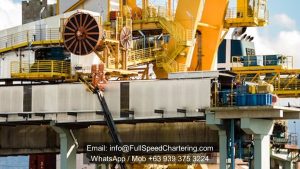
What are the Uses of Hopper Barge in the Philippines?
The use of a hopper barge in the Philippines is remarkably utilized across various sectors, including cargo shipping, construction, mining, and offshore energy. The geographical makeup of the Philippines—with over 7,000 islands—facilitates a significant reliance on maritime transport, underpinning the growing importance of hopper barges.
By design, these unique vessels offer both functionality and versatility in their operations. Whether it’s facilitating the movement of bulk cargo across archipelagic routes or dredging silted waterways to enhance navigability for other vessels, hopper barges have proven indispensable. Their robust utility extends further to aiding in sea construction works or even for reclamation through transporting soils and rocks from mines, thereby setting a concrete example of adaptability.
Here are the 6 uses of hopper barge in the Philippines:
Usage #1 of Using Hopper Barge in the Philippines: Dredging Operations and Maintenance
One of the key advantages of using a hopper barge in the Philippines is its pivotal role in dredging operations and maintenance. Due to their structure and design, these barges are specifically designed for excavating and transferring sediments from the ocean floor, which makes them indispensable when it comes to enhancing shallow waterways or harboring conditions.
Moreover, dredging using hopper barges presents an eco-friendly way to conduct maintenance in aquatic environments. Traditional techniques can harm marine fauna and disrupt ecosystems, whereas hopper barges are engineered to minimize such impacts. This exceptional balance between operational efficiency and environmental responsibility cements the use of hopper barges as absolutely integral within the aqua-engineering sector across this tropical archipelago nation.
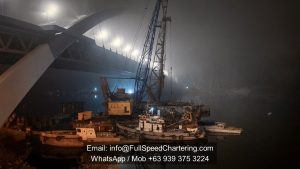
Usage #2 of Using Hopper Barge in the Philippines: Recycling and Waste Disposal
Using a hopper barge in the Philippines has traditionally been associated with heavy freight transportation, but it is also instrumental in modern waste management efforts in a country that struggles with proper waste disposal due to its rapidly growing population and urbanization. As municipal dumps reach capacity, hopper barges have come to play an indispensable role by ferrying vast quantities of refuse toward far-flung landfill sites or recycling facilities.
In this innovative repurposing, not only do these vessels help maintain cleanliness in densely populated areas, but they also contribute towards creating a more sustainable environment. Feats like repurposing waste into energy sources or reusable materials are unthinkable without the functionality of hopper barges. Their colossal carrying capacity, coupled with their durability, enables them to handle such complex tasks efficiently and economically. And so, the humble hopper barge emerges as nothing less than an environmental steward’s dream: confronting waste challenges head-on while supporting circular economy initiatives in the Philippines!

Usage #3 of Using Hopper Barge in the Philippines: Marine Environmental Remediation
One often overlooked but equally crucial advantage of using a hopper barge in the Philippines is its potent capability for marine environmental remediation. Given that the Philippines is an archipelago with over 7,000 islands surrounded by rich marine biodiversity, maintaining the balance and health of its oceanic ecosystems can never be understated. Hopper barges play a significant role in this aspect.
Armed with their substantial load capacity, hopper barges are adept at collecting and transporting sediment and other contaminants from the water bodies for disposal or treatment. Essentially, they procure these undersea pollutants without harming aquatic life or disturbing maritime navigation routes. The bottom-dumping feature present in these barges further ensures the safe unloading of waste materials away from key ecological zones. Coupled with environmentally conscious operational guidelines, using a hopper barge in the Philippines thus becomes a proactive strategy to curb marine pollution while preserving the country’s vibrant seascape.
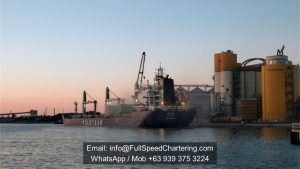
Usage #4 of Using Hopper Barge in the Philippines: Construction Material Shipping
Construction projects in the Philippines typically face significant logistical challenges. Transporting bulky construction materials across the island nation, which has over 7,000 islands, can be time-consuming and expensive. Surprisingly, though, Hopper Barges can dramatically simplify this process.
Advantage number four of using a hopper barge involves the simplified shipping of construction materials. The spacious hold of a hopper barge is suited perfectly for moving large quantities of heavy building materials, such as sand, gravel, or concrete, cost-efficiently and effortlessly across waterways. This not only minimizes transportation costs but also ensures timely material delivery, even to remote or hard-to-reach areas. Essentially, these floating behemoths are construction game-changers in the archipelagic geography of the Philippines!
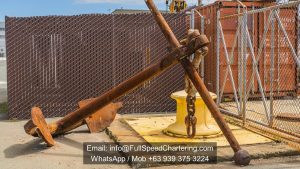
Usage #5 of Using a Hopper Barge in the Philippines: Versatility and More Cargo Capacity
Advantage 5 can’t be understated: Versatility and increased cargo capacity further elevate the usefulness of a hopper barge in the Philippines. These vessels can efficiently transport a dizzying array of loads, ranging from bulk commodities like coal or grain to large aggregates used in construction projects. Their adaptability makes them a preferred choice for diverse industries, including shipping, construction, mining, and offshore energy sectors.
The increased cargo capacity of hopper barges is truly game-changing. Capable of carrying thousands of tons in one go, these workhorses outperform other types of smaller craft consistently. This significantly reduces the number of trips required for extensive jobs, translating into lower fuel costs, minimized operational expenses, and enhanced project timeframes. The Philippine economy benefits hugely from such cost-effective and efficient solutions. If you’re seeking a versatile solution with outstanding load-bearing capabilities for your maritime operations in this Southeast Asian archipelago, look no further than hopper barges!
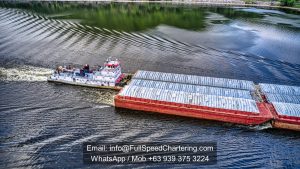
Usage #6 of Using a Hopper Barge in the Philippines: Cost-Effectiveness
Now, let’s explore the cost-effectiveness of using a hopper barge in the Philippines. Unlike other modes of transport, the costs associated with running a hopper barge are significantly less. Due to their sheer capacity, they require fewer trips to move a large amount of material, which directly reduces fuel expenses and labor costs. Fundamentally, this means having higher profits due to reduced operational costs.
Additionally, they present an affordable solution for long-term projects that require continuous transportation or disposal of materials, specifically for businesses in the construction, mining, or offshore energy sectors where budget optimization is crucial without compromising results. Apart from this rational financial argument, contributing towards sustainable practices by reducing carbon footprints makes utilizing hopper barges in the Philippines not just profitable but also an environmentally responsible choice!
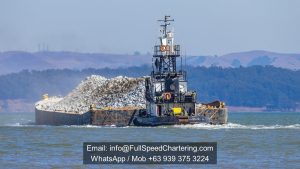
Role of Hopper Barge in the Philippines for Mining Operations
Using a hopper barge in the Philippines has redefined mining logistics by offering efficient and environment-friendly solutions. This massive archipelago is dotingly rich in natural resources, including nickel, cobalt, silver, gold, salt, and copper, an opulent treasury waiting to be unearthed with the correct extraction strategies. Hopper barges ingeniously parley this challenge by enabling the cost-effective transport of mineral ores from remote mining locations to processing stations.
Gone are the days when trucking was the primary mode of transportation for raw materials. Today’s market demands efficiency—something a fleet of trucks just can’t compete with a single barge’s massive carrying capacity. What really sets hopper barges aside is their ability to reduce road congestion and air pollution through bulk transport directly on the waterways that naturally pervade these islands. In fact, several ecologically sensitive regions have started restricting land-based operations, encouraging industries like mining to switch to more maritime logistics like hopper barges, ensuring excellence in sustainability besides operational efficacy. Essentially, such strategic use of hopper barges is pushing industrial growth forward while protecting Mother Nature—one barge at a time!
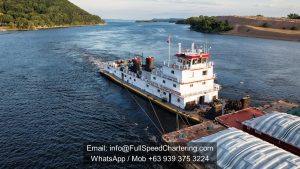
Role of Hopper Barge in the Philippines for Offshore Energy Projects
The role of using a hopper barge in the Philippines for offshore energy projects isn’t merely instrumental—it’s revolutionary. Imagine an archipelago teeming with over 7,000 islands with a burgeoning demand for clean and renewable energy. The geography itself presents tremendous logistical challenges that can impede crucial progress. But here’s where hopper barges ascend as unsung heroes—they bridge this gap by facilitating seamless transportation of heavy machinery, equipment, and raw materials required for these ambitious green energy initiatives.
Moving onshore wind turbines or colossal rig components across scattered islands becomes remarkably manageable and cost-effective due to the unmatchable load capacity of hopper barges. With their robust construction and adaptable features, they are designed to combat fierce ocean currents while ensuring the safe passage of substantial resources. It is this inherent versatility that positions them as indispensable assets in spearheading offshore wind farms or ocean-energy harnessing systems—thus aiding the Philippines to inch closer towards its sustainable energy goals every day.
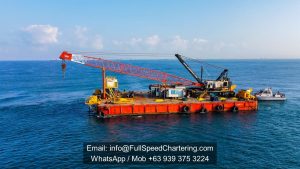
Application of Hopper Barge in the Philippines for the Construction Industry
A fascinating application of a hopper barge in the Philippines is found within the construction industry. This tropical archipelago nation is no stranger to large-scale infrastructure projects, most of which require massive amounts of materials that need transport from one island to another. Hopper barges, with their colossal load capacities and robust construction, are steadfast and reliable allies in such logistical challenges.
When considering land-scarce locations or those with challenging topography, traditional land-based transport options may scarcely cut it. However, thanks to RSA Neptune’s expert engineering collection of self-propelled hopper barges for sale or rent are on hand- they effectively handle the muscle work in these circumstances. From hauling sand for concrete mixtures to transporting huge rocks and other aggregates used as foundational fillers, hopper barges are truly unsung heroes, working quietly (yet incredibly importantly) behind the scenes! Their invaluable role contributes not only to the development but also to sustainability efforts as they reduce carbon emissions through an optimized mode of freight transportation.
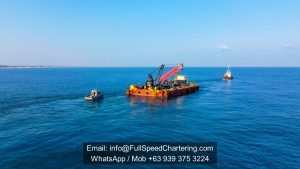
Contribution of Hopper Barge in the Philippines for Offshore Engineering
As the country continues to leverage its vast marine resources, using a hopper barge in the Philippines has become critically essential in offshore engineering operations. Be it developing wind farms or maintaining oil production assets, a flexible and efficient logistical framework is extremely vital. Herein lies the merit of hopper barges, that have shown to excessively enhance off-site operations due to their large cargo capacity and stability.
The execution of underwater construction works, such as building pipelines or platforms, also calls for considerable movement of resources in challenging conditions. With their ability to adjust drafts according to load weightiness, hopper barges provide unmatched support by transporting heavy machinery and materials safely across waters. More so, they are an economic boon, cutting costs tremendously by affording huge load-carrying capabilities, thus reducing the number of trips. As mankind pushes boundaries with offshore facilities, these unsung heroes in Philippine waters persistently strengthen our endeavors.
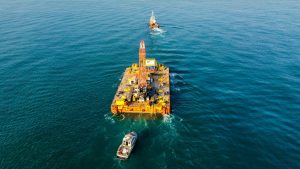
Other Additional Uses of Hopper Barge in the Philippines
Aside from their conventional uses, a hopper barge in the Philippines serves profound purposes that subtly drive economic and environmental value. One illustration of such ingenuity is its employment in mangrove reforestation efforts. Environmental institutions have creatively used these vessels to transport large quantities of mangrove propagules to degraded coastal areas for replanting. The hoppers’ capabilities allow for secure haulage and mass dispersion with minimal damage, thereby accelerating reforestation work and aiding in coastal protection missions.
Moreover, as an archipelago endowed with abundant marine life, the Philippines also utilizes hopper barges to create artificial reefs. By safely submerging old cars or decommissioned ships within ocean depths, they not only resolve waste disposal dilemmas but also create habitats for marine life—a much-needed intervention given recent threats to biodiversity loss due to overfishing and destructive fishing practices. These unconventional uses of hopper barges showcase Filipino resourcefulness while striking a balance between progress and sustainability.
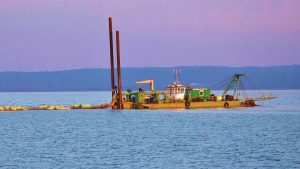
Summary: The Many Advantages of Hopper Barge in the Philippines
In conclusion, the utilization of a hopper barge in the Philippines’ maritime industry presents a plethora of advantages that transcend sectors, from cargo shipping to offshore energy. In addition to their impressive capacity and steadfastness in navigating Philippine waters, they streamline logistics such as the disposal and transportation of materials like aggregates or coal, driving efficiency and time-saving operations.
The employment of hopper barges also extensively underscores sustainable environmental stewardship. By minimizing the number of trips made for material transportation, these sea vessels significantly reduce carbon emissions and thus contribute towards combating climate change—setting a greener standard for other modes of industrial freight transport. Through this lens, it’s accurate to say that hopper barges are not just economic assets for businesses but also ecological allies steering us toward a more sustainable future.

